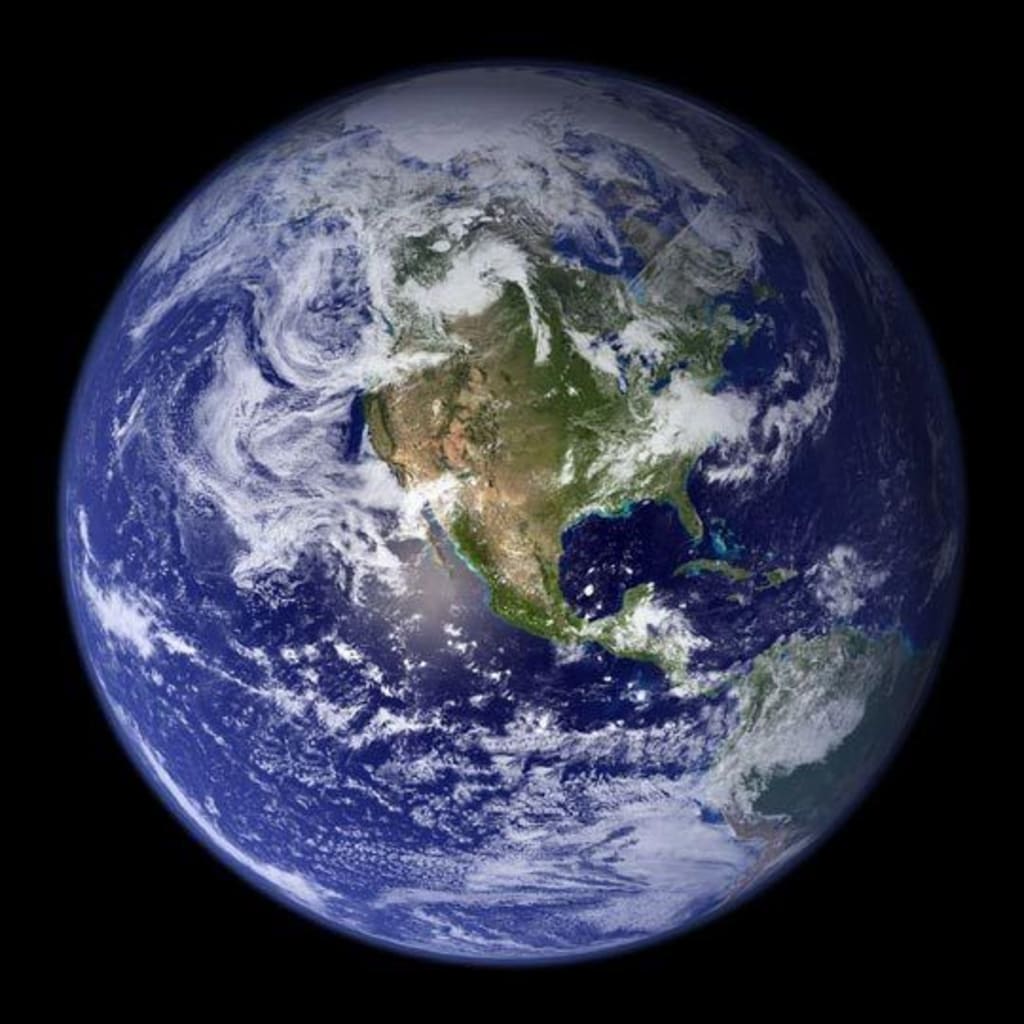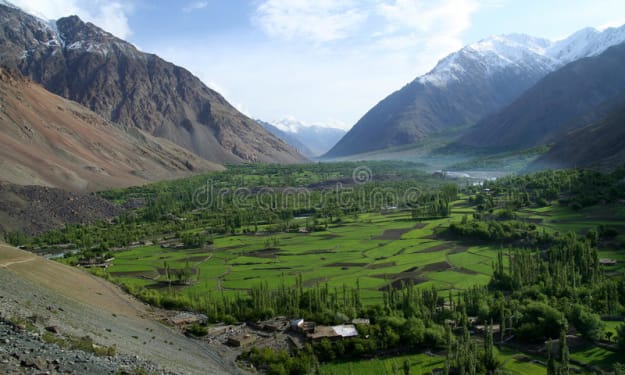Our planet earth
A orbit where human biengs can live like,human,wildlife

Earth is the third planet from the sun and the only known planet with a diverse range of life forms. It is also the fifth largest planet in the solar system and is approximately 4.54 billion years old. Earth is a complex and dynamic system that is constantly evolving. It has a unique combination of physical, chemical, and biological processes that work together to make it the planet we know today.
Physical Characteristics:
Earth has a diameter of approximately 12,742 kilometers and a mass of 5.97 x 10^24 kg. It is an oblate spheroid, meaning that it is slightly flattened at the poles and bulges at the equator. The planet is composed of several layers, including the solid inner core, liquid outer core, mantle, and crust. The crust is the outermost layer of the planet and is divided into several tectonic plates that move slowly across the surface of the planet. These movements result in earthquakes, volcanoes, and the formation of mountains.
Atmosphere:
Earth has a thin layer of atmosphere that is composed of 78% nitrogen, 21% oxygen, and 1% other gases. The atmosphere plays a crucial role in regulating the planet's temperature and protecting it from harmful radiation. The ozone layer, located in the upper atmosphere, protects the planet from the sun's harmful ultraviolet radiation.
Climate:
Earth has a diverse range of climates due to factors such as latitude, altitude, and ocean currents. The planet's climate is regulated by the atmosphere and the oceans. The Earth's climate is changing due to human activities such as burning fossil fuels and deforestation, resulting in an increase in the concentration of greenhouse gases in the atmosphere. This increase is causing the planet's temperature to rise, resulting in more frequent and severe weather events.
Biosphere:
Earth is the only known planet with a diverse range of life forms. The biosphere refers to all the living organisms on Earth, including plants, animals, and microorganisms. Life on Earth is supported by the planet's atmosphere, oceans, and land. The biosphere is constantly evolving, with new species emerging and old species going extinct.
Human Impact:
Human activities have a significant impact on the planet's physical, chemical, and biological processes. Activities such as burning fossil fuels, deforestation, and overfishing are causing significant damage to the planet's ecosystems. Climate change resulting from human activities is also having a significant impact on the planet, with rising sea levels, more frequent and severe weather events, and changes in the distribution of plant and animal species.
Conclusion:
Earth is a complex and dynamic planet that is constantly evolving. It has a unique combination of physical, chemical, and biological processes that work together to make it the planet we know today. The planet's physical characteristics, atmosphere, climate, and biosphere are all interconnected, and changes in one area can have significant impacts on the others. As the only known planet with a diverse range of life forms, it is our responsibility to protect and preserve the planet's ecosystems for future generations.
The inner Earth refers to the layers beneath the Earth's surface, beyond the crust. The Earth is composed of several layers, including the solid inner core, liquid outer core, mantle, and crust. Each layer has its unique physical and chemical properties that contribute to the planet's overall structure and behavior.
The inner core is the Earth's innermost layer and is believed to be a solid sphere of iron and nickel, with temperatures exceeding 5,000 degrees Celsius. The pressure at the center of the inner core is more than 3.5 million times that of the surface of the Earth.
The outer core is a layer of liquid iron and nickel that surrounds the inner core and is responsible for generating the Earth's magnetic field. The movement of the liquid in the outer core creates a dynamo effect, producing a magnetic field that extends around the planet.
The mantle is the largest layer of the Earth and is composed of hot, dense rock. The mantle is divided into several layers, including the upper mantle and the lower mantle. The upper mantle is solid, while the lower mantle is partially molten. The movement of the mantle is responsible for plate tectonics, which is the movement of the Earth's tectonic plates that form the planet's surface.
The crust is the outermost layer of the Earth, and it is the layer that we live on. It is the thinnest layer, with an average thickness of around 30 kilometers beneath continents and about 5 kilometers beneath oceans. The crust is divided into several tectonic plates that move slowly across the surface of the planet, resulting in earthquakes, volcanic eruptions, and the formation of mountains.
In addition to the layers of the Earth, there are also various phenomena that occur in the inner Earth, such as geothermal energy and hot springs. Geothermal energy is produced by the heat generated by the Earth's core, which is harnessed to generate electricity. Hot springs are created when groundwater is heated by the Earth's mantle and rises to the surface.
Overall, the inner Earth is a complex and dynamic system that plays a crucial role in the behavior and evolution of the planet. Understanding the inner Earth is essential to understanding the processes that shape the planet's surface and influence its climate and environment.
Thank you for reading this page
One like and subscribe
About the Creator
Enjoyed the story? Support the Creator.
Subscribe for free to receive all their stories in your feed. You could also pledge your support or give them a one-off tip, letting them know you appreciate their work.
Reader insights
Nice work
Very well written. Keep up the good work!
Top insight
Expert insights and opinions
Arguments were carefully researched and presented






Comments (1)
I love your stories